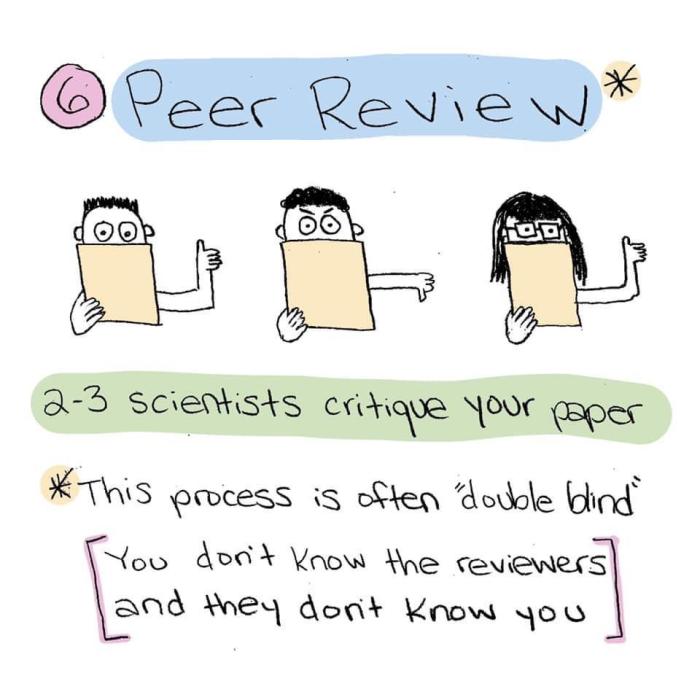Formal examination of a research report by the scientific community – Formal examination of research reports by the scientific community plays a pivotal role in ensuring the quality, credibility, and advancement of scientific knowledge. This rigorous process, involving peer review and critical evaluation, serves as a cornerstone of scientific integrity, fostering a culture of excellence and accountability within the research community.
Through formal examination, research findings are subjected to scrutiny by experts in the field, leading to constructive feedback, identification of errors, and improvement of the overall quality of the research. This process not only enhances the credibility of individual studies but also contributes to the collective advancement of scientific knowledge, ensuring that only the most rigorous and reliable findings are disseminated to the broader scientific community and the public.
1. Introduction to Formal Examination
Formal examination plays a crucial role in the scientific community by ensuring the quality, credibility, and dissemination of research findings. It involves the rigorous evaluation of research reports by experts in the field to verify their validity, reliability, and significance.
Peer review, a key component of formal examination, involves the independent assessment of research reports by other scientists. This process helps to identify errors, biases, and weaknesses in the research, ultimately enhancing its quality and credibility.
2. Components of Formal Examination
A formal examination typically consists of several key components:
- Abstract:Provides a concise overview of the research question, methods, results, and conclusions.
- Introduction:Establishes the context of the research, reviews relevant literature, and states the research question or hypothesis.
- Methods:Describes the research design, participants, procedures, and data collection and analysis methods.
- Results:Presents the findings of the research, including statistical analyses and tables or figures.
- Discussion:Interprets the results, discusses their implications, and identifies limitations and areas for future research.
3. Process of Formal Examination
The formal examination process typically involves the following steps:
- Submission:Researchers submit their research reports to a journal or conference for consideration.
- Review:The reports are assigned to peer reviewers who evaluate their quality based on predefined criteria.
- Publication:Reports that meet the quality standards are accepted for publication, while those that do not may be rejected or require revisions.
4. Benefits of Formal Examination

Formal examination offers numerous benefits for researchers:
- Credibility:Ensures that published research is accurate, reliable, and unbiased.
- Dissemination:Facilitates the dissemination of research findings to a wider audience, including scientists, policymakers, and the public.
- Impact:Helps to shape scientific knowledge and inform decision-making in various fields.
5. Challenges of Formal Examination

Formal examination can also present challenges:
- Time constraints:Reviewers may have limited time to thoroughly evaluate research reports.
- Potential bias:Reviewers may have biases or conflicts of interest that could influence their assessment.
6. Best Practices for Formal Examination: Formal Examination Of A Research Report By The Scientific Community

To ensure fair and impartial reviews, the following best practices should be followed:
- Clear guidelines:Journals and conferences should provide clear guidelines for reviewers to ensure consistency and objectivity.
- Constructive feedback:Reviews should provide constructive feedback that helps researchers improve the quality of their work.
- Respectful communication:Reviewers should communicate with researchers in a respectful and professional manner.
7. Impact of Formal Examination on Research Quality

Formal examination has a significant impact on the quality of scientific research:
- Improved research design:Reviews help researchers identify weaknesses in their research design and improve the validity of their findings.
- Enhanced methodology:Reviewers provide feedback on the appropriateness of research methods and suggest improvements to ensure reliability.
- Accurate reporting:Reviews ensure that research reports are clear, concise, and accurate, facilitating the dissemination and interpretation of findings.
Q&A
What are the key components of a formal examination?
Formal examination typically involves a critical evaluation of the abstract, introduction, methods, results, and discussion sections of a research report.
How does formal examination contribute to the advancement of scientific knowledge?
Formal examination helps to identify and correct errors, improve the quality of research design and methodology, and ensure that only the most rigorous and reliable findings are disseminated to the scientific community.
What are some challenges associated with formal examination?
Challenges include time constraints, potential bias, and the need for reviewers with expertise in the specific research area.